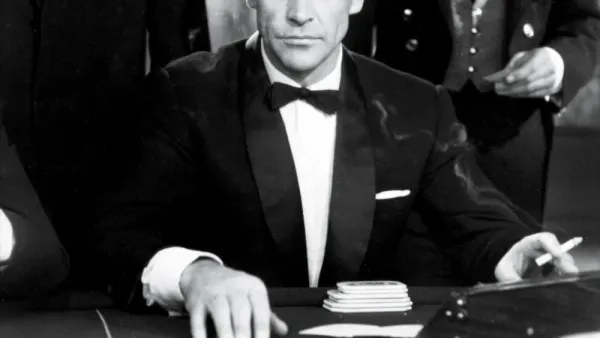Jung’s Shadow and Dante’s Inferno: The Dark Journey Toward Self-Realization
Dante Alighieri’s "Inferno" and Carl Jung’s concept of the "Shadow" converge in a profound exploration of the human psyche’s darkest recesses.

Dante’s descent through the nine circles of Hell mirrors the Jungian process of individuation, where confronting repressed fears, desires, and flaws becomes essential for psychological wholeness. This journey—though perilous—reveals how embracing one’s inner darkness illuminates life’s purpose. By navigating Hell’s torments, Dante allegorizes the integration of the Shadow, transforming sin into self-awareness. Through Jung’s lens, the Divine Comedy emerges as a blueprint for existential transformation, where facing the abyss within becomes the catalyst for transcendence.
The Jungian Shadow: Repression and the Path to Wholeness
The Nature of the Shadow
Carl Jung’s Shadow represents the unconscious aspects of the personality—traits, desires, and instincts deemed incompatible with one’s conscious identity[1][2]. These repressed elements, though hidden, exert immense influence, often manifesting as projections onto others or self-sabotage[3][4]. Jung posited that individuation—the process of becoming psychologically whole—requires confronting the Shadow[2:1]. Failure to do so perpetuates inner conflict, while integration fosters resilience and authenticity[3:1][5].
The Shadow’s duality is critical: it harbors destructive tendencies (e.g., greed, wrath) but also untapped potential (e.g., creativity, courage)[2:2]. For Jung, the path to self-realization demands “radical honesty,” a willingness to descend into chaos to retrieve these fragmented parts[3:2].
Dante’s Inferno as a Map of the Shadow
The Dark Wood: Midlife Crisis and Spiritual Descent
Dante’s journey begins in a “dark wood,” symbolizing existential disorientation—a midlife crisis where purpose falters[6][7]. Jung interpreted such moments as calls to confront the Shadow[5:1]. The three beasts blocking Dante’s path—a leopard, lion, and she-wolf—embody primal fears: lust, pride, and avarice[8][7:1]. These mirror Shadow aspects Dante must integrate to ascend[1:1].
Virgil, representing reason and the ego, guides Dante through Hell, reflecting Jung’s assertion that intellectual rigor alone cannot navigate the unconscious[1:2][6:1]. True transformation requires engaging the Shadow’s visceral reality.
The Nine Circles: Layers of the Repressed Psyche
Each circle of Hell corresponds to a Shadow archetype, punishing sins that distort the soul. Dante’s encounters illustrate how repressed flaws manifest destructively:
- Limbo (Virtuous Pagans): Here, unbaptized souls dwell in longing, symbolizing the Shadow’s unactualized potential. Their stagnation mirrors the consequences of ignoring one’s spiritual aspirations[6:2][9].
- Lust (Circle 2): The tempest-tossed lovers Francesca and Paolo embody projected desire. Dante’s faint—mirroring their anguish—reveals his repressed lust, a Shadow element he shares[1:3][7:2].
- Gluttony (Circle 3): Souls wallow in filth, their excesses literalized. This reflects the Shadow’s consumptive impulses, where indulgence masks emotional hunger[6:3].
- Greed (Circle 4): Hoarders and wasters clash eternally, illustrating the Shadow’s material fixation. Dante’s Florentine context—a city corrupted by wealth—underscores this sin’s personal resonance[10][9:1].
- Wrath (Circle 5): The river Styx’s violent souls epitomize unchecked anger, a Shadow trait Dante confronts through his own vengeful tendencies toward political rivals[10:1].
- Heresy (Circle 6): Heretics in flaming tombs represent rigid dogma, the Shadow’s refusal to evolve. Dante’s exile for political dissent mirrors this sin’s consequences[10:2].
- Violence (Circle 7): Divided into three rings, this circle punishes outward aggression (murderers), self-harm (suicides), and destructive excess (blasphemers). The suicides, transformed into gnarled trees, symbolize the Shadow’s self-negation[6:4][9:2].
- Fraud (Circle 8): Ten bolgias punish manipulators, from seducers to counterfeiters. This reflects the Shadow’s deceptive masks, where fear of vulnerability breeds deceit[1:4][9:3].
- Treachery (Circle 9): Frozen in Cocytus, traitors like Judas and Brutus embody ultimate betrayal. Satan, trapped in ice, represents the Shadow’s core of frozen potential—the unintegrated self[11][9:4].
Satan and the Shadow’s Integration
Confronting the Ultimate Darkness
In Inferno’s climax, Dante climbs Satan’s grotesque form to exit Hell[1:5][11:1]. This act—physically engaging the source of evil—symbolizes Shadow integration. Jung noted that “the greatest treasure lies in the darkest abyss,” and Dante’s ascent reflects reclaiming energy from repressed darkness[3:3][2:3]. Satan’s three faces (red, yellow, black) mirror the Trinity perverted, underscoring how unintegrated Shadows distort divine potential[11:2].
Virgil’s role diminishes here, signaling that reason alone cannot transcend Hell. Dante’s survival hinges on embracing the Shadow’s lessons[1:6][6:5].
From Descent to Rebirth: The Hero’s Journey
Purgatory and the Anima
Emerging in Purgatorio, Dante shifts from confronting the Shadow to engaging the anima (Jung’s feminine archetype). Souls here purge residual sins, reflecting Jung’s concept of sublimation—transmuting base impulses into higher virtues[1:7][5:2]. Dante’s dreams and encounters (e.g., Beatrice replacing Virgil) signify evolving consciousness[11:3][5:3].
Paradise and the Self
In Paradiso, Dante encounters the Self—Jung’s archetype of wholeness. The celestial spheres, governed by divine love, represent integrated psyche layers. Beatrice’s guidance replaces Virgil, symbolizing the transition from reason to transcendent love[1:8][2:4].
Modern Relevance: Shadow Work as Life’s Purpose
The Mandala of the Psyche
Dante’s journey forms a mandala—a Jungian symbol of the Self[2:5]. Each circle, terrace, and sphere maps the psyche’s structure, offering a path from fragmentation to unity. For modern readers, this mirrors therapeutic processes like shadow work, where confronting repressed traits fosters authenticity[3:4][4:1].
Actionable Integration
- Identify Projections: Recognize judgments of others as Shadow reflections[2:6].
- Journaling: Document recurring fears/desires to uncover repressed patterns[3:5].
- Creative Expression: Channel Shadow energy into art, writing, or activism[2:7].
- Meditative Reflection: Visualize engaging “inner demons” to reclaim their power[5:4].
Conclusion: The Stars Beyond Hell
Dante’s Inferno concludes with the poet gazing at the stars—a symbol of hope and rebirth[12][9:5]. Jung similarly posited that integrating the Shadow unlocks “the highest potential”[3:6]. By descending into Hell, Dante models the courage to face one’s darkness, transforming sin into self-awareness. For modern seekers, this journey underscores that life’s purpose lies not in avoiding the abyss, but in illuminating it—turning shadow into light.
https://ufdcimages.uflib.ufl.edu/AA/00/09/83/99/00001/Kline_Luke_Honors_Thesis.pdf ↩︎ ↩︎ ↩︎ ↩︎ ↩︎ ↩︎ ↩︎ ↩︎ ↩︎
https://www.adrianamazzarella.it/new/en/dantes-journey-and-modern-man/ ↩︎ ↩︎ ↩︎ ↩︎ ↩︎ ↩︎ ↩︎ ↩︎
https://dantesisofo.com/integrating-the-shadow/ ↩︎ ↩︎ ↩︎ ↩︎ ↩︎ ↩︎ ↩︎
https://www.reddit.com/r/Jung/comments/guf4uc/any_example_of_someone_who_has_integrated_his/ ↩︎ ↩︎
https://innerself.com/personal/happiness-and-self-help/life-changes/6997-meeting-the-shadow-dantes-inferno-compassion.html ↩︎ ↩︎ ↩︎ ↩︎ ↩︎
https://eternalisedofficial.com/2022/11/24/journey-to-hell-self-knowledge/ ↩︎ ↩︎ ↩︎ ↩︎ ↩︎ ↩︎
https://ahc.leeds.ac.uk/discover-dante/doc/inferno/page/15 ↩︎ ↩︎ ↩︎
https://www.reddit.com/r/Jung/comments/fma50y/is_dantes_divine_comedy_an_initiation_allegory/ ↩︎
https://www.1517.org/articles/dante-and-our-obsession-with-hell ↩︎ ↩︎ ↩︎ ↩︎ ↩︎ ↩︎
https://ahc.leeds.ac.uk/discover-dante/doc/inferno/page/13 ↩︎ ↩︎ ↩︎
https://escholarship.org/content/qt4v99x93n/qt4v99x93n_noSplash_5aa7358343a148317a8a1e12ca0915cd.pdf?t=mp95cp ↩︎ ↩︎ ↩︎ ↩︎
https://www.bailiwickexpress.com/opinion/opinion-five-life-lessons-dantes-afterworld/ ↩︎





